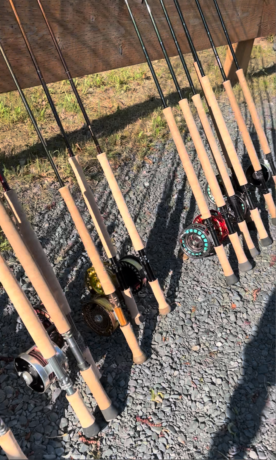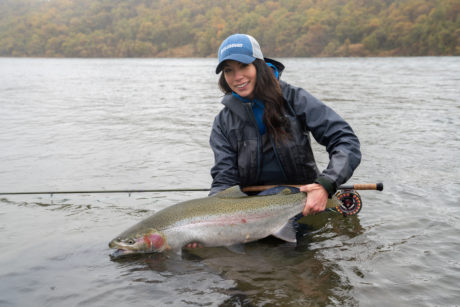
So you’re in the market for your first Spey rod or Two-handed fly rod. Here are 5 tips to help you make the right choice.
- Decide what you’re after. You need to narrow things down slightly more than ‘I need a 6-weight for rainbow trout.’ The average size of the fish will determine the size of the Spey Rod you’ll need. Remember, a Spey rod is typically 2 sizes up from a single-hand rod. In other words, a 4-weight Spey Rod has the power of a 6-weight single-handed rod. You don’t want to go too big or too small for the species you’re after. Salmon usually warrant an 8 and 9-weight Spey rod. BRTs (Big Rainbow Trout) or Steelhead between a 7 and 8 weight Spey rod. Smaller species are really fun with a 4 or 5-weight.
- Decide what type of fly you’ll be fishing. Believe it or not, the fly you want to use is a major rule of engagement in Spey fishing. The type of fly will determine what type of head you want to use. For light-weight and more delicate flies like the soft hackle, you’ll want to get a Scandi-style head. Go with a Skagit-style head for heavier flies or streamers requiring a heavier tip. Or simply get both.
- Cast a few, if possible. If you’re starting and may not know what sort of action you prefer, Scandi or Skagit. Holding and casting a Spey rod helps a lot. Rods vary significantly in size and shape of the cork grip, fit and finish, and weight – trying them out will help you decide what suits you. Connect with your local fly shop and try finding a Spey Clave you can attend. Spey Claves typically have a variety of rods you can demo, with various Spey lines. It’s a good way to “get a feel” for a Spey rod. If you don’t live near a fly shop or don’t have a Spey Clave you’re willing to attend and choose to buy online, make sure you understand return policies in advance, in case you’re not thrilled with your new baby when it arrives.
- Learn about warranty policies. ‘Lifetime warranties’ are the norm, but how these warranties work can vary quite a bit. What’s the fee to replace a section if and when your rod breaks? What’s the normal turnaround time for repairs? Lifetime warranties are not all created equal.
- Buy from someone you trust. If you like having a fly shop in town that offers quality products, good advice, and excellent customer service, you should buy your rod from that shop, plain and simple. If you don’t have a local shop or you prefer shopping online, buy from a reputable online retailer that’s doing some good for the industry.

Other Spey Tips:
Leave a Reply